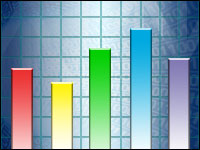
I took a trip in the Wayback machine last week when I attended DataWeek at the invitation of Dun & Bradstreet. As you might recall, D&B is a data company that collects copious amounts of information about individuals and firms and then sells it for use in filling out profiles for business purposes — an oversimplification, but it will suffice. That data helps companies evaluate business risks — to determine, for example, when to extend credit to an unknown entity. Companies happily subscribe to the service to help with decision-making.
D&B has been in this business for decades, and my Wayback machine experience had little to do with it directly. It was more about all the other companies that were at the show. They were embryonic, for the most part, focused on Big Data and analytics. The experience took me back a few decades to when the tech industry was beginning, and every company had “data” or “technology” in its name.
Then and now, the discussion was about data, though in the earlier incarnation the conversation focused on just having data in digital form. Today, it’s all about storing the stuff and extracting meaning from it in the form of information businesses can use to create the knowledge they need to make decisions.
The Value of Time Stamping
DataWorld is an interesting venue for a certain kind of technologist focused on data analysis, but I’ve seen this movie. There was very little discussion of business or of the cultivation of data beyond analyzing it for some not-well-defined downstream uses. So my Wayback experience was all about what typically happens in early markets. Vendors talk about their technologies hoping that early adopter buyers will find merit in the goods and be willing to attempt doing something useful with them.
From my perspective, the proceedings seemed to mirror what I’ve been discerning from data I’ve collected on the business uses of data, which is to say that it really is early days for business too. While many companies are adopting analytics and approaches to Big Data to help them make better sense of their businesses, many are still using the new technology to answer old questions rather than explore new ones.
For instance, one of my big issues lately has come down to time-stamping data in sales and marketing funnels. You might think this idea is old enough to have universal acceptance — but it doesn’t. Time stamps on major milestones in either sales or marketing can augment the data we collect routinely from all sources and lead to a great deal of new information.
For example, a simple subtraction operation on two time stamps can tell you how long it takes to do something — such as move from one stage to another in a process — and it therefore turns static data into a real representation of the process itself. With that you can begin to determine average speed through a stage or the entire pipeline and deduce — for predictive purposes — what a “good” opportunity looks like from your data. Prediction is one of the grail quests of modern analytics and not time stamping shows how far we are from getting it all right.
That’s really the utility of Big Data in a nutshell and the opportunity of predictive analytics; a simple tweak that provides significant business value. However, we’re not there yet — at least, not all of us — and that brings me back to the Wayback machine. DataWeek convinced me of how early we are in the data revolution, and how much we need to do to truly enable our front office business processes to run on information.
Big Data Needs Big Thinkers
While we’re at it, perhaps this is a good time to seriously consider what we call the era that is being shaped by Big Data. While it’s true that data is at the core, the business need, and something that wasn’t much in evidence at DataWeek, is for knowledge.
Knowledge, and not raw data, is what people use to make business decisions, and it is delivered whenever information enters a brain to be manipulated and evaluated. Naming a show — or an era, for that matter — after its most salient feature rather than after some benefit is not the best way to enlist powerful new followers, and the Big Data movement could use a few more big thinkers.
While Big Data — and data more generally — is all the buzz these days, it is not helping people envision a solution that makes life better or more profitable. Perhaps this is a partial explanation of the hype cycle, the early phase of a market when the promise of a new technology begins to greatly outstrip its ability to deliver tangible results. We’ll get through that phase as we usually do. On the other side, things like DataWeek will get new names, as we figure out how to make money through simple applications of big concepts — like time stamping.























































